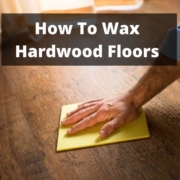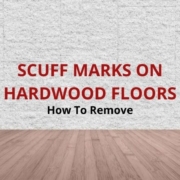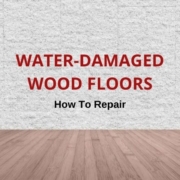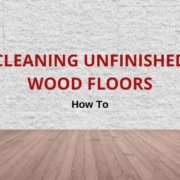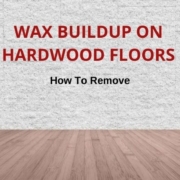How To Fix Hardwood Floor Cupping
One summer afternoon you come down to lunch and you suddenly notice something is not quite right. When your sports magazine slips from your grasp and you bend to pick it up from the floor, you discover what it is. The smooth glossy hardwood surface seems somewhat uneven, dipping slightly in places. What is it and what could have caused it? Can it be fixed and how?
In this article, we shall be answering all these questions in detail and learning how to fix cupping in hardwood floors to enable you to resolve the problem as efficiently as possible and restore your floors to their initial state.
What Is Cupping in Hardwood Floors?
Cupping in hardwood floors refers to a condition that causes individual planks to rise at the sides. It may be considered to be the opposite of crowning where the center of a plank rises higher than the edges.
In both cases, your floor will lose its even smoothness resulting in its surface becoming irregular. However, in the case of cupping, its planks will take on a concave or cup-like shape hence the name of the condition.

Causes of Hardwood Floor Cupping
The main cause of cupping in hardwood floors is the presence of excess moisture in the immediate vicinity.
The material from which hardwood floors are made is especially susceptible to moisture due to the tendency of wood to absorb it, particularly when it is present in large quantities to adjust its own moisture levels to match those of its surroundings.
Cupping affects both engineered and solid hardwood and can occur under the following conditions:
- Spills: If water spills are not cleaned instantly or properly, the fluid will seep into the wood resulting in its swelling and the alteration of its form.
- Leaks: Because leaks often take a while to detect, they can be especially damaging to hardwood floors due to the prolonged exposure to moisture they cause.
- Excess subfloor moisture: If your basement or crawl space happens to be affected by dampness, it may cause cupping in the floorboards in the room above.
- Changes in weather conditions: Certain climates experience rather warm and humid summers and the season can result in elevated levels of moisture and with it the risk of cupping.
- Improper installation of flooring: Hardwood flooring must be given time to adjust to surrounding moisture levels by means of a process known as acclimating or conditioning, before it is installed. Failure to take this step could result in cupping in a matter of months.
How to Fix Cupping in Hardwood Floors
It is possible to fix cupping in hardwood floors by taking the following steps:
Ascertaining Moisture Levels
This should be the first step you take before attempting to repair or replace all or part of your flooring or before seeking professional assistance.
This can be done by using a wood moisture meter to check moisture levels in every part of your home.
Conducting due diligence in this regard will enable you to determine moisture levels and their source, and play a key role in enabling you to determine the next step.
Address the Source of the Moisture
Common causes of excess moisture in your home include:
- Leaking pipes: If the cause of the problem happens to be leaking pipes, you will need to have them repaired.
- A leaking dishwasher: In the case of this appliance you may need to take a look at its float switch, its gasket, the hoses, the valves, or the door latch. It may even be a matter of using the correct dishwasher detergent or simply ensuring it sits level.
- A leaking fridge: This may be due to the blockage of the defrost drain or the uneven placing of the appliance. However, if neither of these issues happen to be the cause, professional assistance may be required to resolve the leakages.
- A damp crawl space: This may be resolved by placing a vapor barrier to prevent moisture from filling your crawl space. However, you may need to call on the services of a water mitigation professional.
Regulate the Moisture Content of Your Home
This step can be especially effective if the cause of cupping is due to seasonal changes at different times of the year.
You will simply need to use a dehumidifier to eliminate the excess moisture in the air and restore conditions to optimal levels. Depending on the level of moisture damage in this case and the promptness with which action is taken, you may see your floorboards return to normal.
Related Reading: How To Repair Water-Damaged Hardwood Floors
If the cupping is not reversed once you have taken this step, you may need to proceed to replacing your floor or sanding it.
In either case, you will have the option of relying on professional assistance or replacing or sanding your floor yourself.
Will Cupped Hardwood Floors Flatten Out Over Time?
Depending on the extent of the damage, and the promptness with which the exposure to the excess moisture is stopped, your cupped hardwood floors may flatten eventually.
It is worth noting that they can take a considerable length of time to do so and as noted above, repairs or sanding should only be carried out once you are certain that cupping is permanent.
Table of Contents
